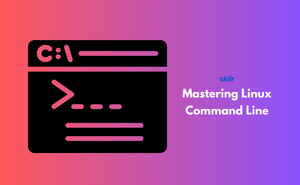👇 CELEBRATE CLOUD SECURITY DAY 👇
00
HOURS
00
MINUTES
00
SECONDS

Mastering Linux Command Line
Industry-endorsed certificates to strengthen your career profile.
Start learning immediately with digital materials, no delays.
Practice until you’re fully confident, at no additional charge.
Study anytime, anywhere, on laptop, tablet, or smartphone.
Courses and practice exams developed by qualified professionals.
Support available round the clock whenever you need help.
Easy-to-follow content with practice exams and assessments.
Join a global community of professionals advancing their skills.
You will need:
Mastering Linux opens doors to various IT careers, including:
This course is a comprehensive guide to Linux, covering everything from basic commands to advanced system administration. You will learn file management, user permissions, process control, networking, storage, and Bash scripting. By the end, you will be confident in using Linux for system administration, development, or cloud computing.
No prior experience is required. The course is beginner-friendly, but basic computer literacy and familiarity with command-line interfaces will help.
Salaries depend on experience and location, but general estimates are:
Linux is widely used in:
By completing this course, you will:
The course is self-paced, and completion time depends on experience:
Yes! Linux is in high demand, and this course covers essential skills for entry-level and advanced IT roles. To improve job prospects: